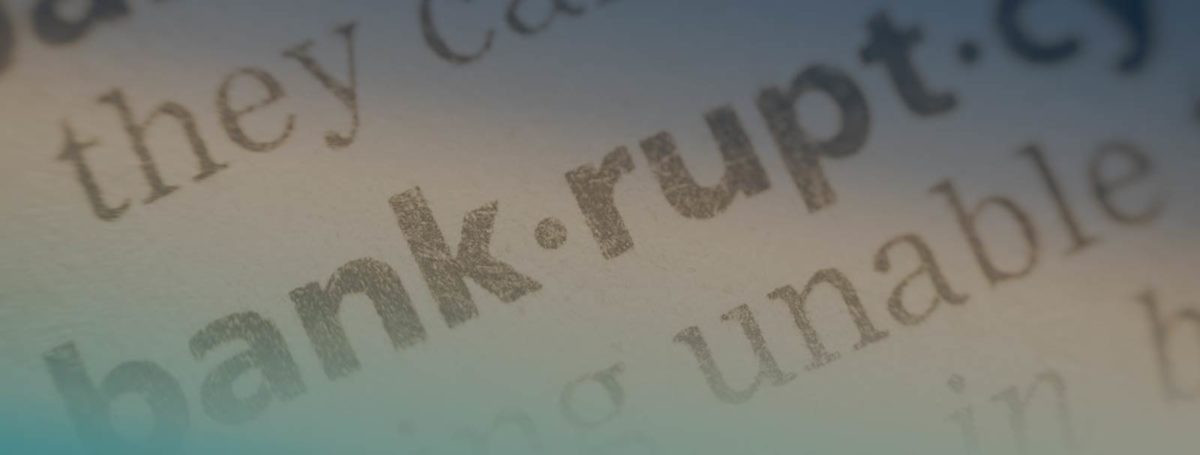Consumer bankruptcy is designed to eliminate all of your dischargeable debt and give you a financial fresh start. There are requirements in order to file a Chapter 7 or Chapter 13 bankruptcy. The experienced Ohio bankruptcy attorneys at Fesenmyer Cousino Weinzimmer can help you navigate the maze of regulations, recognize which debts may be discharged, and determine what is the best chapter for you to file.
Here is a glossary of bankruptcy terms to help you understand the process:
- Automatic Stay – An injunction that stops lawsuits, foreclosures, garnishments, and collection activity against you when bankruptcy is filed.
- Bankruptcy – A legal procedure for dealing with debts.
- Bankruptcy Estate – Your legal or equitable interests in property at the time you file for bankruptcy.
- Bankruptcy Petition – The document which opens the bankruptcy case filed by you, the debtor (in a voluntary case), or by creditors (in an involuntary case).
- Chapter 7 – The chapter of the Bankruptcy Code providing for the sale of a debtor’s nonexempt property and the distribution of the proceeds to creditors. Assets are sold and used to pay debts, and remaining dischargeable liabilities are written off.
- Chapter 13 – The chapter of the Bankruptcy Code providing for adjustment of debts that allows you to restructure dischargeable and non-dischargeable debts over a three- to five-year repayment period, without the pressure of lawsuits, wage garnishment or creditor harassment.
- Claim – A creditor’s statement of right to payment.
- Creditor – One who claims to be owed money by the debtor.
- Credit Counseling – A course from a nonprofit credit counseling agency that debtors must complete prior to filing bankruptcy, and a course in personal financial management that debtors must complete before discharge of debts.
- Current Monthly Income – The average monthly income received by the debtor over the six calendar months before commencement of the bankruptcy case.
- Debtor – A person who has filed a petition for relief under the Bankruptcy Code.
- Discharge – Release of a debtor from personal liability for certain dischargeable debts set forth in the Bankruptcy Code.
- Dischargeable Debt – A debt for which personal liability will be eliminated under bankruptcy.
- Equity – The value of a debtor’s interest in property that remains after liens. (Example: If a house valued at $200,000 has a $180,000 mortgage, the equity is $20,000.)
- Exemptions, Exempt Property – Specific Values in Property that the Bankruptcy Code or state law allows debtors to keep their assets through the bankruptcy process. Your primary residence and vehicle exemptions are the most common examples.
- Joint Administration – Where two or more cases can be administered together.
- Joint Petition – One bankruptcy petition filed by a husband and wife together.
- Lien – The right to take, hold or sell property as security or payment for a debt.
- Liquidation – A sale of a debtor’s property with the proceeds to be used for creditors.
- Means Test — A method for determining whether someone qualifies for financial assistance under Chapter 7 of the Bankruptcy Code.
- No-Asset Case – A Chapter 7 case where there are no assets available to satisfy any portion of the creditors’ unsecured claims.
- Non-Dischargeable Debt – A debt that generally cannot be eliminated in bankruptcy, such as student loans, tax liability or debts for alimony or child support.
- Objection to Dischargeability – A trustee’s or creditor’s objection to the debtor being released from personal liability for certain dischargeable debts.
- Objection to Exemptions – A trustee’s or creditor’s objection to the debtor’s attempt to claim certain property as exempt from liquidation.
- Party in Interest – A party who has standing to be heard by the court in the bankruptcy case.
- Plaintiff – A person or business that files a formal complaint with the court.
- Post-Petition Transfer – A transfer of the debtor’s property made after the commencement of the case.
- Pre-Bankruptcy Planning – The arrangement of a debtor’s property before bankruptcy to allow the debtor to take maximum advantage of exemptions.
- Preference or Preferential Debt Payment – A debt payment made to a creditor before a debtor files bankruptcy that gives the creditor more than the creditor would receive in the debtor’s Chapter 7 case.
- Priority – The Bankruptcy Code’s statutory ranking to determine the order in which unsecured claims will be paid if there is not enough money to pay all in full.
- Priority Claim – An unsecured claim that is entitled to be paid ahead of other unsecured claims.
- Proof of Claim – A written statement and verifying documentation filed by a creditor that describes the amount and reason the debtor owes the creditor money.
- Property of the Estate – All legal or equitable interests of the debtor in property when the case starts.
- Reaffirmation Agreement – An agreement from a creditor that is entered into by a Chapter 7 debtor who wants to keep certain property and continue paying a dischargeable debt (such as an auto loan) after the bankruptcy.
- Schedules – Detailed lists showing the debtor’s assets, liabilities, and other financial information.
- Secured Creditor – A creditor who has the right to take, hold or sell certain property of the debtor.
- Secured Debt – Debt backed by a mortgage, pledge of collateral or other lien, such as an auto loan.
- Statement of Financial Affairs – Questions the debtor must answer in writing concerning sources of income, transfers of property, lawsuits by creditors, etc.
- Statement of Intention – Statement made by a Chapter 7 debtor concerning plans for dealing with consumer debts that are secured by property.
- Trustee – The appointed representative of the bankruptcy estate who has statutory powers, principally for the benefit of unsecured creditors.
- U.S. Trustee – An officer of the Justice Department responsible for supervising the administration of bankruptcy cases, estates, and trustees.
- Under-Secured Claim – A debt secured by property that is worth less than the debt.
- Unscheduled Debt – A debt that was incurred prior to the filing of the bankruptcy case that was not listed by the debtor in the schedules filed with the court.
- Unsecured Claim – A debt for which a creditor holds no special assurance of payment.
- Voluntary Transfer – A transfer of a debtor’s property with the debtor’s consent.
Remember, bankruptcy can be complicated, but the experienced Ohio bankruptcy attorneys at Fesenmyer Cousino Weinzimmer understand the issues and the difficult decisions involved in taking this step and starting to rebuild your credit. We will work with you to make sure you understand your options and help you decide on solutions that make sense in your individual case.
Call Fesenmyer Cousino Weinzimmer at one of our office branches at 614-228-4435 (Columbus), 937-222-7472 (Dayton), or 877-654-5297 (Cincinnati) for a free consultation so we can determine what debt relief solutions will work best for you.
Bankruptcy Services We Offer
- Frequently Asked Questions About Bankruptcy
- Chapter 7
- Chapter 13
- Bankruptcy for the Self-Employed
- Divorce and Bankruptcy
- Tax Debt
- Creditors’ Rights
- Student Loans Debt
- What Can and Cannot Be Discharged In Bankruptcy?
- Stop Collections and Lawsuits
- What Can I Keep?
- What Are the Differences Between Filing Jointly and Filing Individually?
- Alternatives to Bankruptcy
- Consumer Bankruptcy Glossary


